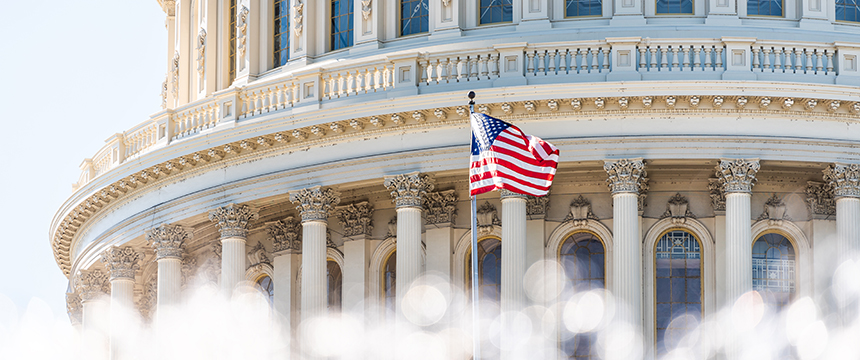
On March 10, 2021, the House of Representatives passed the $1.9 trillion COVID-19 relief bill, the American Rescue Plan (the “Plan”). Both chambers of Congress have signed off on the legislation, and President Biden is expected to sign it by Friday, March 12, 2021. Once in effect, the Plan will provide many Americans with another round of stimulus checks, extend enhanced unemployment benefits, increase or otherwise modify certain tax credits, and significantly expand health care subsidies such as COBRA, among providing other relief. This article provides a summary of the unemployment insurance provisions contained in the Plan.
The Plan allocates an additional $300 billion in unemployment benefits through September 6, 2021. Individuals already receiving benefits will generally be permitted to continue receiving benefits for up to an additional 25 weeks. The Plan would extend four (4) COVID-19 related unemployment benefit programs through September 6, 2021:
- Pandemic Unemployment Assistance (“PUA”) – This program provides targeted protections to gig workers and self-employed individuals who are not typically eligible to receive unemployment benefits.
- Pandemic Emergency Unemployment Compensation (“PEUC”) – This program has increased the number of weeks of unemployment benefits that individuals who are normally eligible for benefits can receive. PEUC thereby permits individuals to receive benefits for a longer period of time due to the COVID-19 pandemic.
- Federal Pandemic Unemployment Compensation (“FPUC”) – This program, also known as the “federal bump,” provides individuals that are eligible to receive state benefits to receive a supplemental $300 weekly benefit amount (funded by the federal government) in addition to the weekly benefit amount provided by the State.
-
Mixed Earner Unemployment Compensation (“MEUC”) – The Plan would also extend the MEUC additional $100 weekly benefit amount. The purpose of the MEUC program is to aid individuals who receive their income through more than one source that includes both self-employment and wages paid by another employer, and therefore are sometimes only eligible for a lower level of state benefits.
Further, although unemployment benefits are typically taxable, the Plan provides that up to $10,200 of unemployment benefits from 2020 will be tax-free for households with a combined income of less than $150,000.
The extension of the above-expanded benefits could present problems for employers that are trying to recall workers because individuals may receive a higher weekly benefit now than under traditional unemployment programs. Further, the increase to the maximum number of weeks that individuals can receive unemployment benefits may result in individuals being less eager to return to work quickly. As discussed in a previous article regarding the recall of workers, businesses can take the following steps to combat these challenges:
- Document what methods your business has implemented to make the workplace safe.
- Communicate the safety plan to all individuals to whom a recall invitation has been extended in an effort to reduce their health and safety concerns, which may be a factor in their decision not to return to work.
-
Consider providing reasonable accommodations where appropriate for employees with a medical condition that make them particularly vulnerable to COVID-19.
-
Notify all individuals you are prepared to recall that the company will report a failure to return to work, absent good cause, to the applicable State unemployment agency and may dispute their benefits.
-
Report all unsupported failures to return to work to the State unemployment agency.
Step 5 has become much easier in recent months in comparison to when the Pandemic first started because state agencies have implemented user-friendly methods for employers to report employee failures to return to work. For example, the Michigan Unemployment Agency has posted fact sheets and other guidance for employers and employees regarding what constitutes suitable employment and good cause for refusing to return to work. Moreover, Michigan employers are instructed to report refusals to return to work through their MIWAM Account and include the following information:
- A copy of the job offer, including rate of pay and how it was communicated to the individual;
- Whether the employer maintained safety standards required by state and federal guidance and law regarding COVID-19 precautions;
- If applicable, how the offered work compares to work previously performed for the employer by the employee; and
-
The reason the employee gave for refusing to return to work.
For more information on these topics and State specific reporting procedures regarding failures to return to work, please contact the author listed below.
COVID-19 continues to impact companies in all sectors of the economy. Foley is here to help our clients effectively address the short-term and long-term impacts on their business interests, operations, and objectives. Foley provides insights and strategies across multiple industries and disciplines to provide timely perspective on the wide range of legal and business challenges that companies face conducting business while dealing with the impact of the coronavirus. Click here to stay up to date and ahead of the curve with our key publications addressing today’s challenges and tomorrow’s opportunities. To receive this content directly in your inbox, click here and submit the form.
